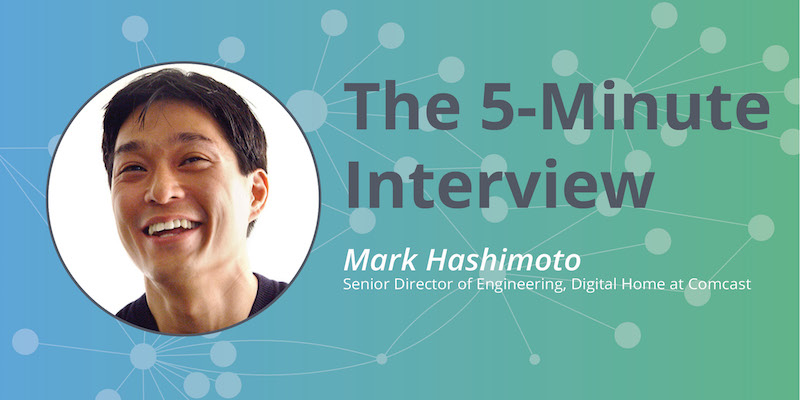New Features, Now: 5-Minute Interview with Mark Hashimoto, Senior Director of Engineering, Digital Home at Comcast

Senior Manager, Content, Neo4j
4 min read

“One of the most surprising things I’ve seen with Neo4j is the speed at which we’re able to innovate and deliver features to our customers,” said Mark Hashimoto, Senior Director of Engineering, Digital Home at Comcast.
In this week’s five-minute interview, we discuss how Comcast uses the flexibility of the graph data model to develop and launch new features rapidly using Neo4j for persistence.
Tell us about how Comcast is using Neo4j.
Mark Hashimoto: I work in the Digital Home space, which includes XFINITY Home Security and high-speed Internet. We use Neo4j to develop new features for our customers. Neo4j is our persistent store for personalizing and adding contextual value to the products we already have.
What made you choose Neo4j?
Hashimoto: Four years ago, we were thinking about the data model that we needed to model a digital smart home – people, places (like rooms), all your IoT devices, your laptop, your Xbox, your Alexa speaker and so on. We thought, “What’s the best, most intuitive way to model that, persistently?”
One of my engineers read a paper about graph databases. We started doing a survey of the market. We looked at a lot of different graph technologies. Then we started trying out graph products, both commercial and open source.
Something about Neo4j that we really liked is the support model. At Comcast, open source is great, but when something breaks, you can’t just yell into the ether, “Hey, fix it, random developer X.” We need somebody to have our back in case we have a production issue, and that quickly eliminated a number of players.
What have been some of the most surprising or interesting results you’ve had while using Neo4j?
Hashimoto: One of the most surprising things that I’ve seen with Neo4j is the speed at which we’re able to innovate and deliver features to our customers. Especially at GraphConnect, most people are talking about fraud detection, recommendations, and putting your data into a data fabric and looking at it and getting insights. For us, it was more about getting features out to customers very rapidly.
Since graph databases are inherently schemaless, the graph model allows us to add new data types and new paradigms and just attach them to an existing profile or device or person. That was surprisingly powerful – more powerful than I ever thought it would be.
We launched another feature just this week where, for example, Kelly Clarkson fans who want to see her in concert can buy tickets through their X1 Voice Remote. They can actually buy the tickets directly off the television. We wouldn’t be able to do that unless it was this flexible. It was surprising how fast we were able to iterate.
If you could start over with Neo4j, taking everything you know now, what would you do differently?
Hashimoto: We would probably do more diligence in trying to figure out the best way to do a multi-region, all public cloud deployment using Neo4j. That would probably be something that we would invest in sooner than later.
What do you think the future of graph technology looks like in your industry?
Hashimoto: At Comcast, we have many lines of business. We have cable television, high-speed internet, theme parks in Florida and California as well as China and Japan. But I believe that where our industry is going is creating a data fabric. Like many very large Fortune 50 companies, each business runs independently at its own speed.
Because they do that, their IT departments tend to be siloed or specialized. They do something really well and they do it extremely well. But your cable customers are probably very different from your customers that are going to Universal Studios and bringing their families and riding the rides. If we could pull some of that data together, we will probably find some really interesting business opportunities.
I think that’s where the graph industry’s actually going: to become more of a data fabric. To connect all this data from different silos, within the same business.
Anything else you’d like to add?
I want to thank everybody at Neo4j for being great partners to us and running a great conference. It’s been a pleasure. I see a lot of people smiling. It’s a very friendly conference, so if you haven’t gone to GraphConnect, you should definitely go.
Want to share about your Neo4j project in a future 5-Minute Interview? Drop us a line at content@neo4j.com








